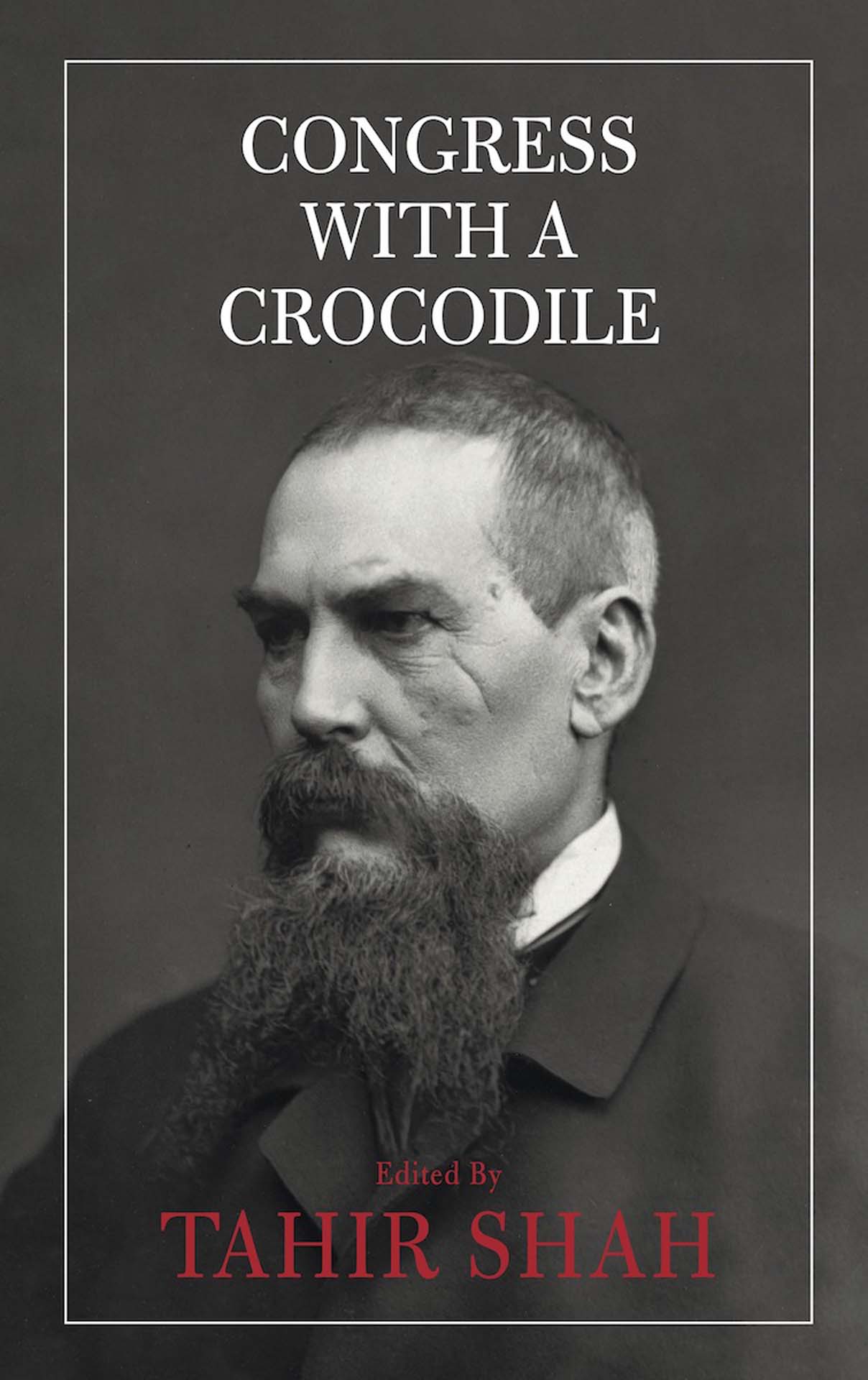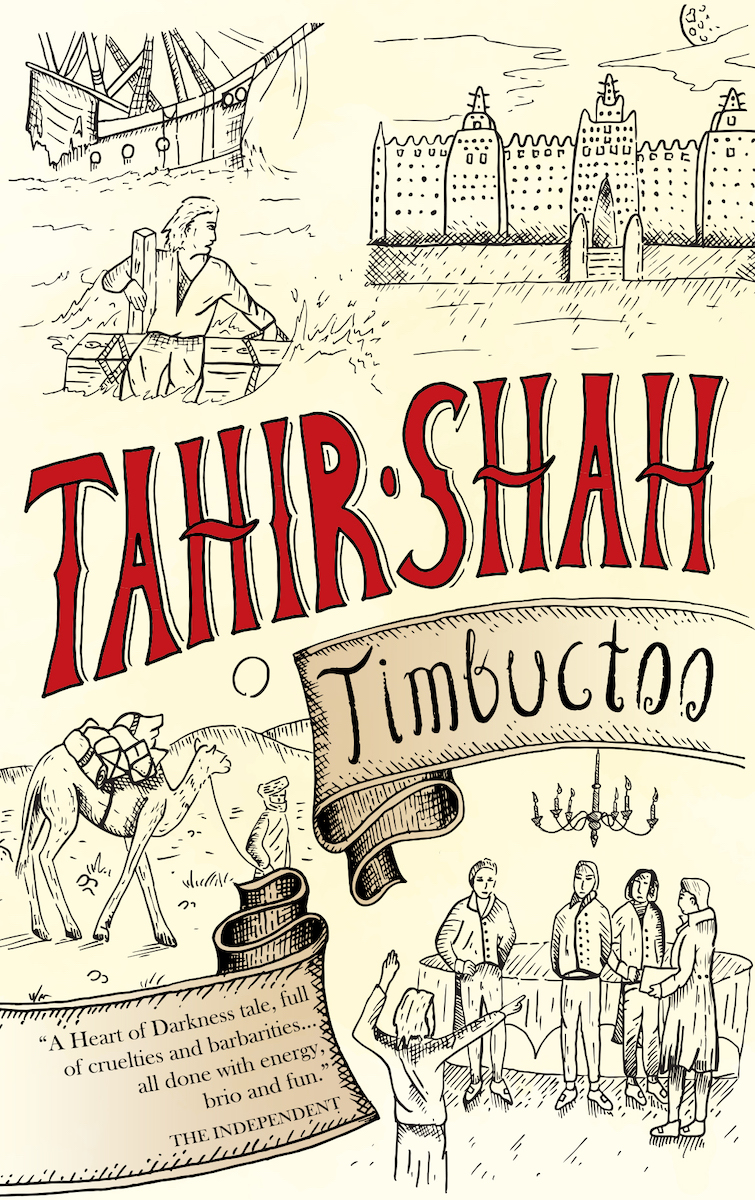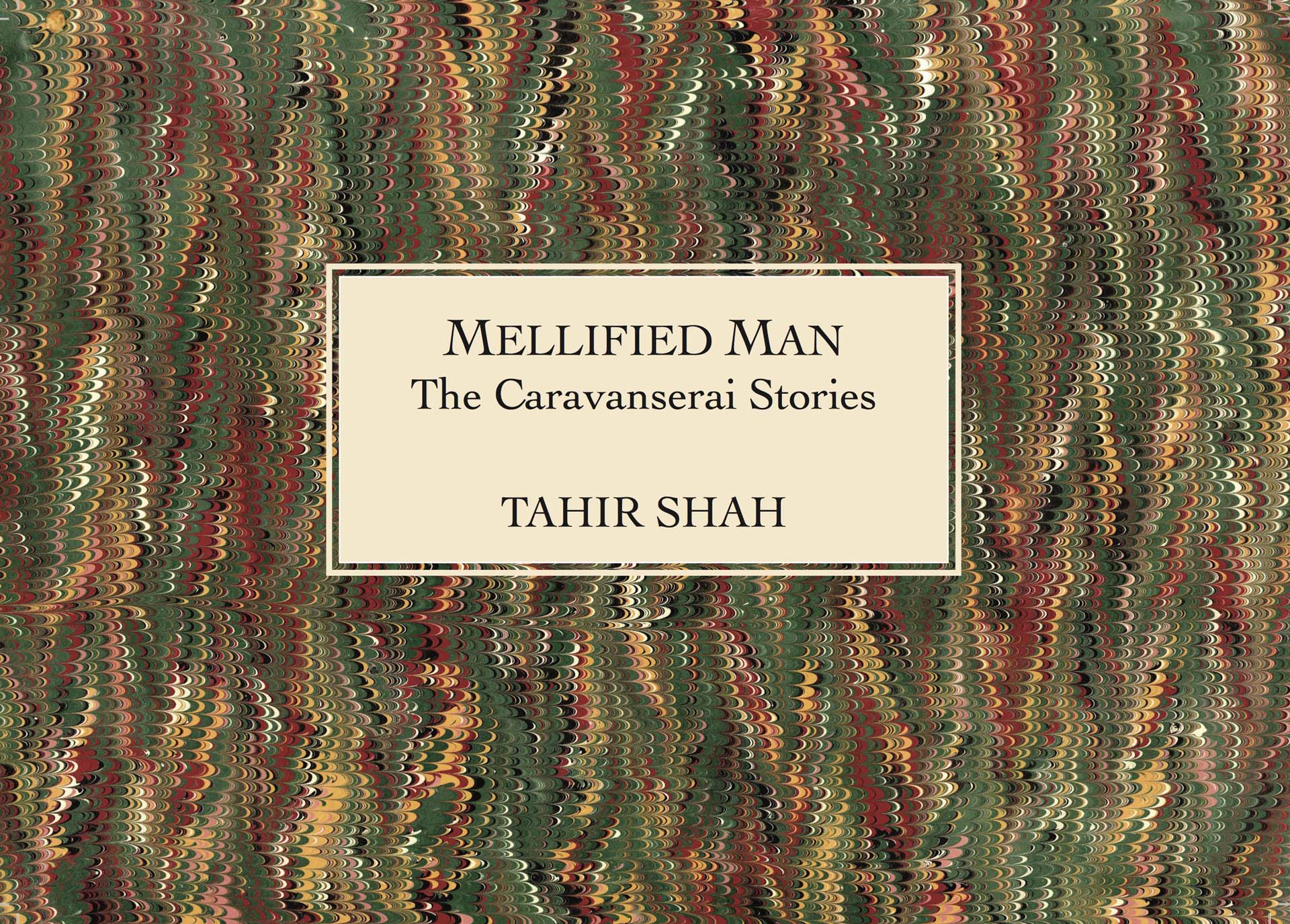Recent & Forthcoming Work
Like an expertly cut gemstone that catches the light, Daydreams of an Octopus & Other Stories is a dazzling homage to the teaching tales contained in the great treasury of A Thousand and One Nights. Written to be appreciated in…
[popup_anything id="1133"]
For a thousand nights, ruthless King Shahriyar weds a new bride at dusk, only to have her executed the following dawn. Fearing for their lives, the kingdom’s young women are in hiding, or have already fled. A request arrives for Scheherazade…
[popup_anything id="1119"]
As a child living in the English countryside, a constant stream of people turned up at Tahir Shah’s family home, all in search of his father – the writer and thinker Idries Shah. Among them were literary giants, including the classicist…
[popup_anything id="1124"]
It all began with a little black seed – the seed of a watermelon. Yahya, the self-styled ‘Melon King’, presented it to Tahir Shah one day, urging him to plant it in the courtyard garden of his home, the Caliph’s House. The seed was duly planted…
[popup_anything id="1127"]
The first book in Tahir Shah’s trilogy of Nasrudin stories, The Misadventures of the Mystifying Nasrudin builds on his highly acclaimed travelogue, Travels With Nasrudin. Having been raised in a household in which the wise fool…
[popup_anything id="1136"]
The second book in Tahir Shah’s trilogy of Nasrudin stories, The Peregrinations of the Perplexing Nasrudin follows hot on the heels of The Misadventures of the Mystifying Nasrudin, and the highly acclaimed Travels With Nasrudin.
[popup_anything id="1139"]
The third book in Tahir Shah’s series of Nasrudin stories, The Voyages and Vicissitudes of Nasrudin builds on the foundations laid down by The Misadventures of the Mystifying Nasrudin and The Peregrinations of the Perplexing Nasrudin…
[popup_anything id="1142"]
This fourth book of Nasrudin tales from the acclaimed storyteller, Tahir Shah, concerns the trials and tribulations of the inimitable wise fool’s life in the Land of Fools. Some Nasrudin stories are overtly hilarious, while others are downright…
[popup_anything id="1145"]
The wise fool of Oriental folklore, Nasrudin is known across a vast swathe of the globe – from Morocco in the west, to Indonesia in the east. Appearing under different names and in all manner of guises, he’s universally admired for his…
[popup_anything id="1147"]
Oddball and loner Oliver Quinn was raised by his uncle, the proprietor of New York’s most bizarre emporium of Oriental rugs, Ozymandias & Son. Zoned out more than he’s zoned in, Oliver perceives patterns in everything – from fallen autumn…
[popup_anything id="1150"]
Oddball and loner Oliver Quinn was raised by his uncle, the proprietor of Ozymandias & Son, New York’s most bizarre emporium of Oriental rugs.Through a series of what he believes to be coincidences Oliver discovers a portal in the…
[popup_anything id="1153"]
Oddball and loner Oliver Quinn was raised by his uncle, the proprietor of New York’s most bizarre emporium of Oriental rugs, Ozymandias & Son. Zoned out more than he’s zoned in, Oliver perceives patterns in everything – from fallen…
[popup_anything id="1158"]
Through a life cloaked in mystery, Edwardian polymath Hannibal G. Fogg pushed the boundaries of exploration, science and code-breaking – producing feats of unrivalled cerebral dexterity. Hailing from a landed family, Fogg was a confidant to…
[popup_anything id="1160"]
When his stage show goes spectacularly wrong, celebrated magician Harry Singh, a.k.a. The Great Maharaja Malipasse, becomes a laughing-stock and outcast. Having resorted to two-bit performances in the pouring rain on Blackpool Pier, the down-on-his-luck…
[popup_anything id="1162"]
In a career that has embraced fiction and non-fiction, and bridged West with East, Tahir Shah has frequently commented on his own work – or on that of other authors – in a series of supplementary essays.For the first time, the dozens of Prefaces, Introductions, Forewords…
[popup_anything id="1165"]
Eight strangers were clustered around the campfire of the distant caravanserai – silhouetted, ragged, and ripened by adventure. As the flames licked the darkness, sparks spitting up into the desert’s nocturnal firmament, a traveller cleared his throat and told his tale.
[popup_anything id="1167"]
In 1918, Tahir Shah’s grandfather, The Sirdar Ikbal Ali Shah, published the small volume of ‘poetry in prose’ – Eastern Moonbeams. The book marked not only the beginning of a glittering literary career, but the start of something far greater.
[popup_anything id="1169"]
In 1918, Tahir Shah’s grandfather, The Sirdar Ikbal Ali Shah, published the small volume of ‘poetry in prose’ – Eastern Moonbeams. The book marked not only the beginning of a glittering literary career, but the start of something far greater.
[popup_anything id="1171"]
Although Tahir Shah began his writing career with travel literature, in recent years he has embraced the realm of fiction, producing groundbreaking work on an awe-inspiring scale. His first work within the genre was Timbuctoo, a…
[popup_anything id="1173"]
Over the last thirty years, Tahir Shah has roamed the farthest limits of the world, and produced a stupefying body of travel literature, embracing a cornucopia of quests.He has sought out the so-called Birdmen of Peru, studied magic with the godmen…
[popup_anything id="1175"]
A titan of the Victorian age, Sir Richard Francis Burton was a scholar, linguist, explorer, and swordsman – and was feted as one of the most important British polymaths ever to have lived. Having spent much of his adult life in Arabia, Burton…
[popup_anything id="1177"]
Celebrated as an author of travel and fiction, Tahir Shah has published more than forty books in a career that’s spanned three decades. In that time he’s turned his hand to many kinds of writing – from journalism to novels, and from travelogues to…
[popup_anything id="1179"]
From the Introduction: An image had rooted itself in my mind. That of an ingenuous fresh-faced American arriving at Casablanca’s airport at the start of a mid-life crisis. I could see him clearly. Until now he has never published work…
[popup_anything id="1181"]
With communication faster and easier than it’s ever been, we are better informed than ever about cultures from every corner of the earth. But rather than merely observing other societies – from books, documentaries, and…
[popup_anything id="1183"]
The Anthologies
During a career of thirty years, Tahir Shah has published dozens of books on travel, exploration, topography, and research, as well as a large body of fiction.Through this extraordinary series of Anthologies, selections from the corpus are…
The Backlist
Forty-five million years ago, the supercontinent of Gondwanaland split apart. This created what are now known as India, Africa and South America. The huge landmass was named after the Gond people of India. Meeting a Gond storyteller…
[popup_anything id="1188"]
Blaine Williams lives and breathes Casablanca. He’s trapped in a make-believe world of Bogart and Bergman, of smoke-filled cafés, of fugitives and hit men. And he’s having a mid-life crisis. Having lost his girl, his job, and his home, he flees…
[popup_anything id="1190"]
The greatest eye surgeon of his age, Dr Amadeus Kaine is feted by royalty, dictators, Hollywood, and the international jet-set. An epicurean of sophistication and dark obsessions, he’s devoted his life to locating the perfect food.
[popup_anything id="1192"]
When the Spanish Conquistadors swept through Peru in the sixteenth century, they were searching for great golden treasure. In 1572 they stormed the Inca stronghold of Vilcabamba, only to find the city deserted, burned, and already stripped…
[popup_anything id="1194"]
King Solomon, the Bible’s wisest king, also possessed extraordinary wealth. He built a temple at Jerusalem that was said to be more fabulous than any other landmark in the ancient world, heavily adorned with gold from Ophir. The precise…
[popup_anything id="1200"]
On the morning of her fifth birthday, Miki Suzuki’s aged grandfather gave her an unusual gift – the fragment of a story. The tale told of a magical realm where all the women were beautiful, dressed in the finest gowns, and where the men had the looks…
[popup_anything id="1202"]
Inspired by a book his grandfather wrote eighty years ago, master storyteller and author Tahir Shah set about creating Scorpion Soup, an intense experience of interlinked and overlapping tales. Having been raised on stories from both East and…
[popup_anything id="1204"]
India is a land of miracles, where godmen and mystics mesmerise audiences with wondrous feats of magic. In great cities and remote villages alike, these mortal incarnations of the divine turn rods into snakes, drink acid, eat…
[popup_anything id="1206"]
First published thirty years ago, The Middle East Bedside Book illuminates lesser-known facets of Arab culture and folklore, presenting the region from the inside out. Considering the observations of writers, artists, philosophers and kings, the book…
[popup_anything id="1210"]
Inspired by a true story: In October 1815, an illiterate American sailor named Robert Adams was discovered roaming the streets of London, half-naked and starving. In the months that followed, high society was rocked by his tale…
[popup_anything id="1212"]
Enthralled by a line from the chronicle of a sixteenth-century monk, which said that the Incas ‘flew like birds’ over the jungle, and by the recurring theme of flying in Peruvian folklore, Tahir Shah set out to discover whether the…
[popup_anything id="1214"]
Travels With Myself is a collection of selected writings by Tahir Shah, acclaimed Anglo-Afghan author and champion of the intrepid. Written over twenty years, the many pieces form an eclectic treasury of stories from Latin America…
[popup_anything id="1216"]
Tahir Shah’s collection of Three Essays considers aspects of human society and culture that help us to understand both the world around us and ourselves. An extraordinary thought-provoking essay, Cannibalism: It’s Only Meat, is…
[popup_anything id="1208"]
Writer and film-maker Tahir Shah – in his 30s, married, with two small children – was beginning to wilt under brash, cramped, ennervating British city life. Flying in the face of friends’ advice, he longed to fulfil his dream of finding a place…
[popup_anything id="1198"]
Shortly after the 2005 London bombings, Tahir Shah was thrown into a Pakistani prison on suspicion of spying for Al-Qaeda. What sustained him during his terrifying, weeks-long ordeal were the stories his father told him as a child in Morocco.
[popup_anything id="1196"]
On the last day of his life, writer and savant Ikbal Ali Shah posted a brown manila envelope to his son Idries Shah – an envelope containing the ‘Afghan Notebook’. In time, the document was presented to Tahir. And with it, the obsession…
[popup_anything id="1218"]
Limited & Special Editions
The Caravanserai Stories. Inspired by the works of Tahir Shah’s grandfather, The Sirdar Ikbal Ali Shah, the eight Caravanserai Stories are presented in an extremely special limited edition. Assembled entirely by hand, and with accordion bindings, the stories…
[popup_anything id="1220"]
The Caravanserai Stories. Inspired by the works of Tahir Shah’s grandfather, The Sirdar Ikbal Ali Shah, the eight Caravanserai Stories are presented in an extremely special limited edition.Assembled entirely by hand, and with accordion bindings, the stories…
[popup_anything id="1220"]
The Caravanserai Stories. Inspired by the works of Tahir Shah’s grandfather, The Sirdar Ikbal Ali Shah, the eight Caravanserai Stories are presented in an extremely special limited edition. Assembled entirely by hand, and with accordion bindings the stories…
[popup_anything id="1220"]
The Caravanserai Stories. Inspired by the works of Tahir Shah’s grandfather, The Sirdar Ikbal Ali Shah, the eight Caravanserai Stories are presented in an extremely special limited edition. Assembled entirely by hand, and with accordion bindings the stories…
[popup_anything id="1196"]
The Caravanserai Stories. Inspired by the works of Tahir Shah’s grandfather, The Sirdar Ikbal Ali Shah, the eight Caravanserai Stories are presented in an extremely special limited edition. Assembled entirely by hand, and with accordion bindings, the stories…
[popup_anything id="1220"]
The Caravanserai Stories. Inspired by the works of Tahir Shah’s grandfather, The Sirdar Ikbal Ali Shah, the eight Caravanserai Stories are presented in an extremely special limited edition. Assembled entirely by hand, and with accordion bindings, the stories…
[popup_anything id="1220"]
The Caravanserai Stories. Inspired by the works of Tahir Shah’s grandfather, The Sirdar Ikbal Ali Shah, the eight Caravanserai Stories are presented in an extremely special limited edition. Assembled entirely by hand, and with accordion bindings, the stories…
[popup_anything id="1220"]
The Caravanserai Stories. Inspired by the works of Tahir Shah’s grandfather, The Sirdar Ikbal Ali Shah, the eight Caravanserai Stories are presented in an extremely special limited edition. Assembled entirely by hand, and with accordion bindings, the stories…
[popup_anything id="1220"]
Inspired by a book his grandfather wrote eighty years ago, master storyteller and author Tahir Shah set about creating Scorpion Soup, an intense experience of interlinked and overlapping tales. Having been raised on stories…
[popup_anything id="1222"]
For centuries, the greatest explorers of their age were dispatched from the power-houses of Europe London, Paris and Berlin on a quest unlike any other: To be the first white Christian to visit, and then to sack, the fabled metropolis of Timbuctoo.
[popup_anything id="1224"]






































































